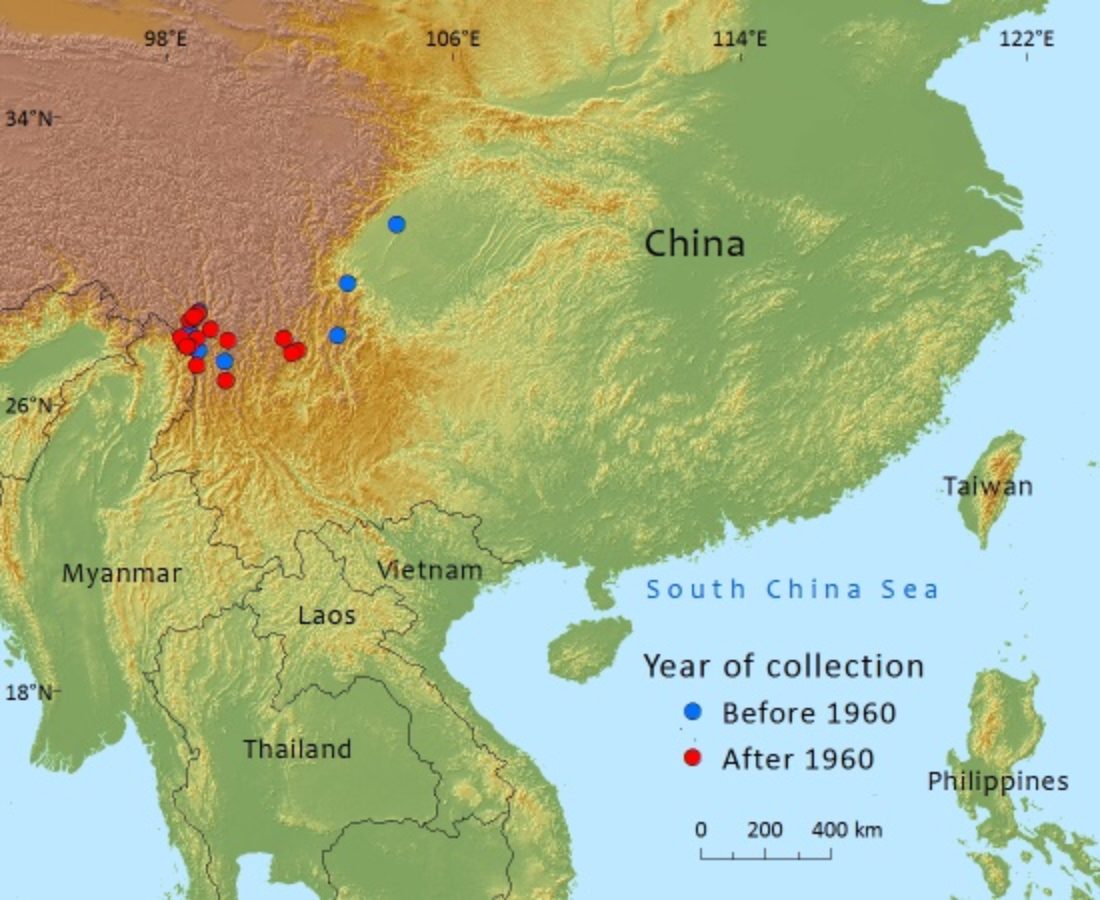Pinaceae
Picea brachytyla var. complanata
Widley distributed in the Sino-Himalayan region where logging has greatly reduced the population and caused fragmentation
References and further reading
- Farjon, A. (2010). A Handbook of the World's Conifers. Koninklijke Brill, Leiden.
- Wang, S. & Xie, Y. (2004). China Species Red List. Vol. 1 Red List. Higher Education Press, Beijing, China.
- Zhang, D, Katsuki, T. & Rushforth, K. (2013). Picea brachytyla var. complanata. In: IUCN 2013. IUCN Red List of Threatened Species. Version 2013.1. <www.iucnredlist.org>. Downloaded on 14 July 2013.
